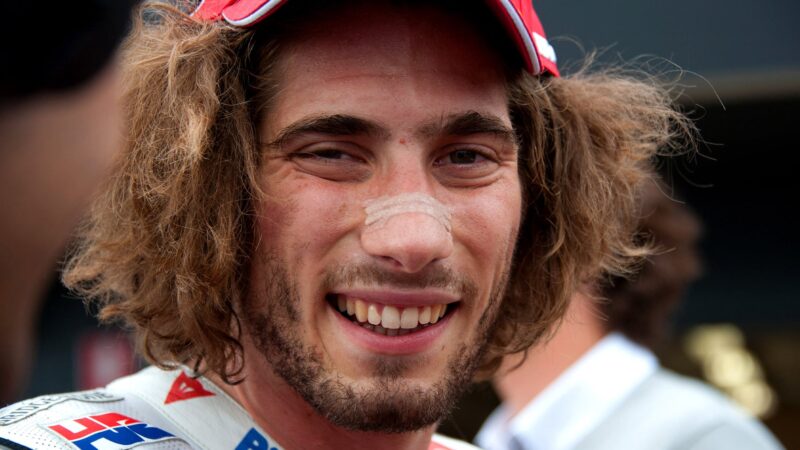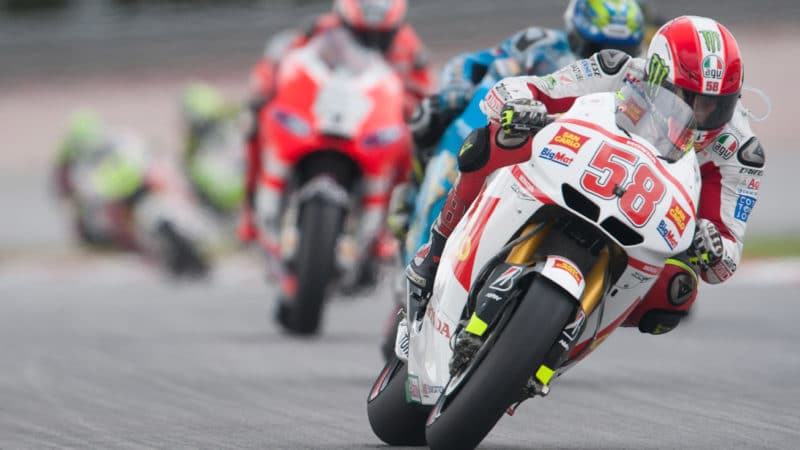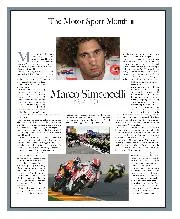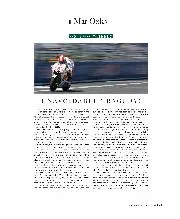Most people would want to shrink into a foetal ball in such a situation, but he found the chaos hilarious, grinned throughout and answered everyone’s questions. He knew that this was part of the deal of making it to the top. On one of those occasions his (always) gyrating hands made contact with my voice recorder and sent it flying through the air. As it landed on the far side of the pit he was already laughing and saying sorry.
He was one of those riders who seemed genuinely happy to make a connection with you, he didn’t treat you with suspicion or derision. During interviews he was open and honest, not afraid to say good things or bad things about other riders, nor indeed about himself. He admitted that his mistake at Assen in June 2011, when he crashed at the first left-hander and took out Jorge Lorenzo, “was a very stupid mistake… I will try not to repeat it”.
He took criticism on the chin and knew he would put such mistakes behind him and get better.
His English, spoken in that unmistakable baritone voice, was good. Languages (and mathematics) were his strong points at school where he was a good, though mischievous pupil. “I never stay at my desk, I always go around the class and speak with the other children. I was always… agitated.”
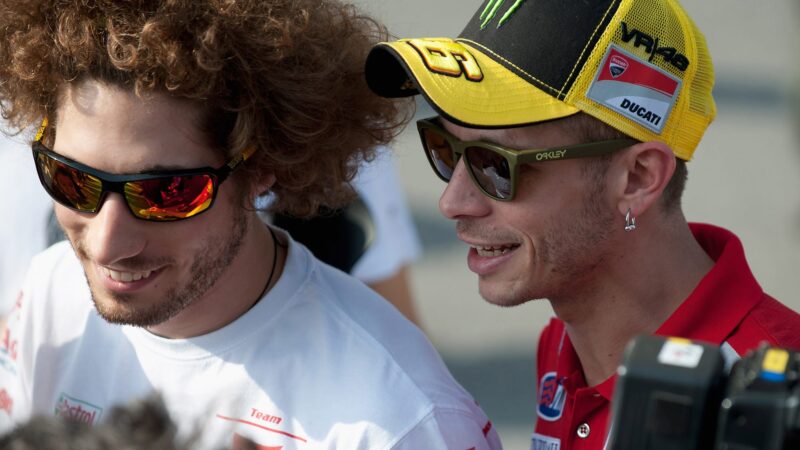
Rossi and Simoncelli started out as superstar and fan. They ended up as very close friends
Mirco Lazzari gp/Getty Images
As an adult he was the same: always up for a laugh, always trying to find humour from every situation. He was scruffy and he was goofy, but he didn’t care and that made him lovable. Fans adored him because he was a madman on the racetrack and yet warm and open in normal life. He was the polar opposite of a MotoGP robot. He seemed to have no pretensions or affectations – he was just a nice guy with a serious speed addiction. Even when he was away from racing he enjoyed life at full throttle: “motocross, kart, disco, ski…”.
And then there was the hair, which grew according to his reputation. When he first arrived in 125 GPs it was short and neatly cut. By the time he started winning 250 GPs in 2008 it had mushroomed into a wild mane that became his trademark. Eventually he had to keep it under control with an alice band, just as Rossi had done with his teenage mop.
“If I have a problem with somebody I try to speak to them. I don’t go to the teacher to cry.”
Beyond his desire to be a sportsman, Simoncelli didn’t have great ambitions. He believed that if he hadn’t become a racer, he would’ve ended up working in his father’s ice-cream shop in the Adriatic beach resort of Cattolica.
His friends in the paddock were Valentino Rossi, Mattia Pasini, Raffaele De Rosa and Alex Baldolini. Simoncelli was only nine years old when Rossi started in GPs, so he was one of the first Valenteeniboppers.
“I like him from the beginning because he was crazy and he make some overtakes that the other riders don’t like so much,” said Simoncelli, whose other great racing hero was Kevin Schwantz, whom he had watched on TV as a young boy. He had posters of both of them on his bedroom wall. It was from these tough, fighting men that he learned his gung-ho attitude.
Simoncelli met Rossi for the first time at Assen in 2002 – “an emotional moment” – when he was contesting the European championship that ran the same weekend as the Dutch TT. Their relationship changed – from superstar and fan to a grown-up friendship – when Rossi started taking an interest during Simoncelli’s rookie 250 season in 2006. The MotoGP champ offered advice and did so again when Simoncelli arrived in MotoGP in 2010. But Rossi knew when to stop helping – when Simoncelli started beating him.
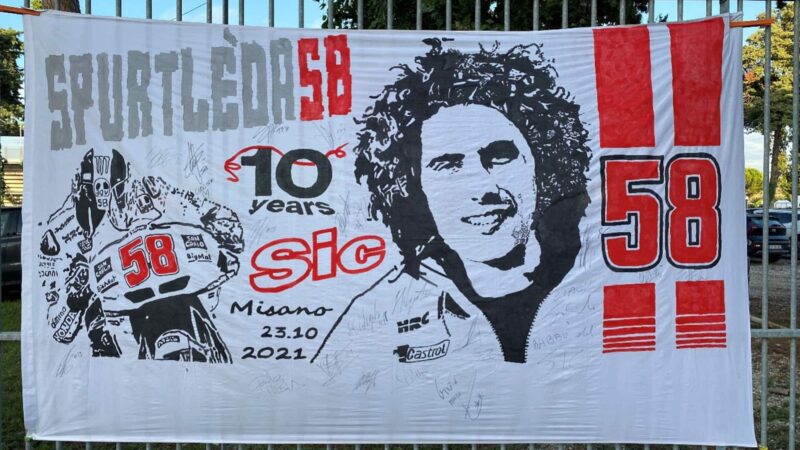
The tenth anniversary coincides with qualifying at Misano this Saturday – there will, no doubt, be numerous tributes at the circuit named in his honour
Oxley
By the time of his death they were no longer master and pupil, but great friends and rivals who were learning from each other. “Valentino and I still meet sometimes in the evening and talk about the track,” said Simoncelli. “Sometimes I ask him questions and sometimes he asks me questions.” Rossi said that his fallen friend had become “like a little brother”.
Simoncelli’s eagerness to get to the front made sure that he also had enemies in the paddock. His critics claimed he was mad, bad and dangerous. Rossi’s experienced mechanic Alex Briggs disagreed. “The only reason they don’t like Marco is because he’s new and he’s fast, simple as that,” said Briggs. Simoncelli was battering on the door of the alien’s hideout and some of the aliens were scared.
